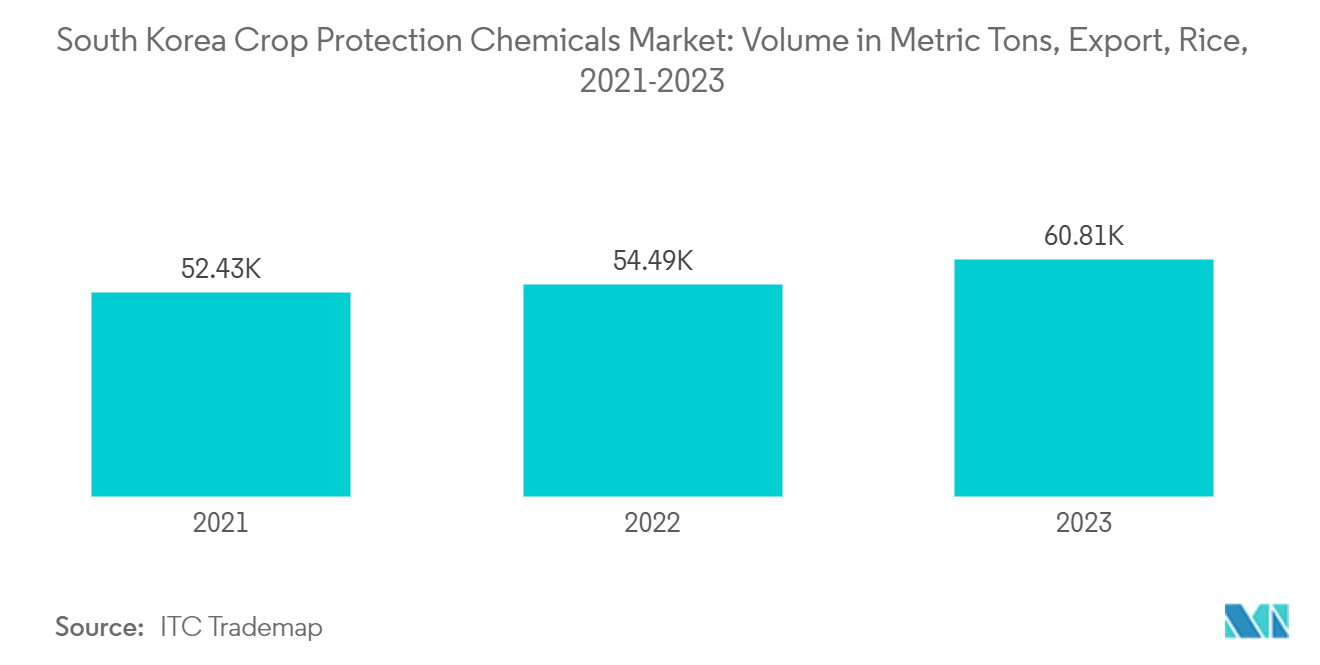Market Trends of South Korea Crop Protection Chemicals Industry
Disease and pests Threat Driving the Demand for Pesticides in Rice Crop
Rice production is a cornerstone of South Korea's agricultural industry and a primary driver of the country's crop protection chemicals market. As the crop with the highest proportion of agricultural output, rice is particularly vulnerable to pests and diseases. Without the application of fungicides and insecticides, rice yield losses due to insects and diseases can reach 16%.
Rice blast disease, a severe fungal infection, poses one of the most significant threats to rice production in South Korea. This disease can substantially reduce yields, with global estimates indicating annual losses of 10–30%. In South Korea, effective control of rice blast is crucial for maintaining high yields, making fungicides an essential component of rice production practices.
The susceptibility of rice to pests and diseases, especially rice blast, highlights the importance of crop protection chemicals in South Korea. These products are vital for sustaining rice yields and maintaining the economic stability of the agricultural sector.
In addition, rising export demand is further driving the need for crop protection chemicals. Ensuring crops are protected from pests and diseases while maintaining high quality standards is essential to improving productivity. According to ITC Trade Map, South Korea’s rice exports increased from 54.5 thousand metric tons in 2022 to 60.1 thousand metric tons in 2023, highlighting the growing importance of protecting rice crops to meet both domestic and international demand.

Growing Herbicides Consumption
Pesticide use in South Korea is experiencing steady growth, with herbicides constituting the largest portion of pesticide consumption. The country's limited arable land and the need to maximize agricultural productivity have made herbicide use essential for weed control, which significantly impacts crop yields. FAOSTAT data shows that pesticide usage increased from 16,745 metric tons in 2019 to 19,882 metric tons in 2022. During the same period, herbicide usage rose by 15.4% to 6,207 metric tons.
Herbicides play a crucial role in rice production, which is the dominant crop in South Korea's agricultural sector. They are vital for minimizing weed competition and ensuring optimal growth conditions. Other crops such as vegetables, soybeans, and fruits also rely heavily on herbicides for effective weed management. The increasing emphasis on maximizing farming efficiency, coupled with advancements in herbicide technology and formulation, continues to drive the expanded use of these chemicals across South Korea's agricultural sectors.


